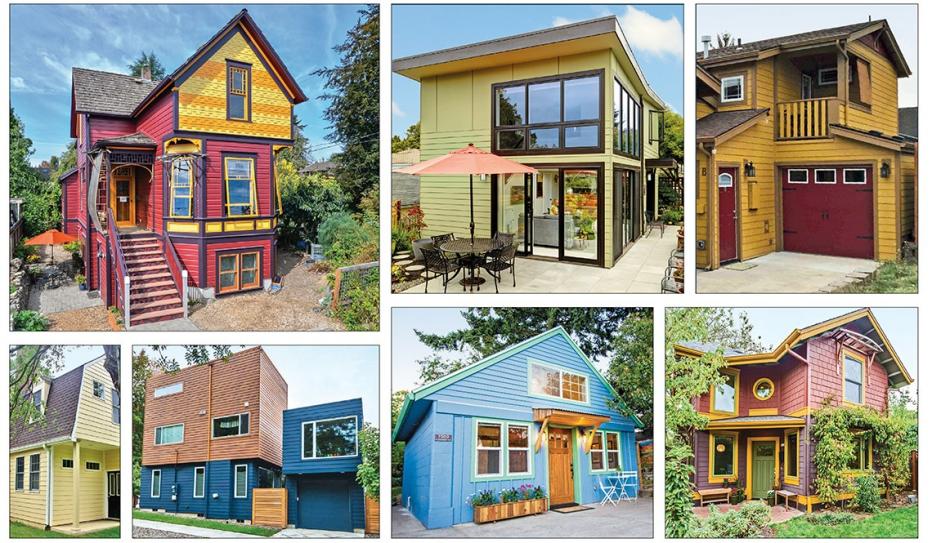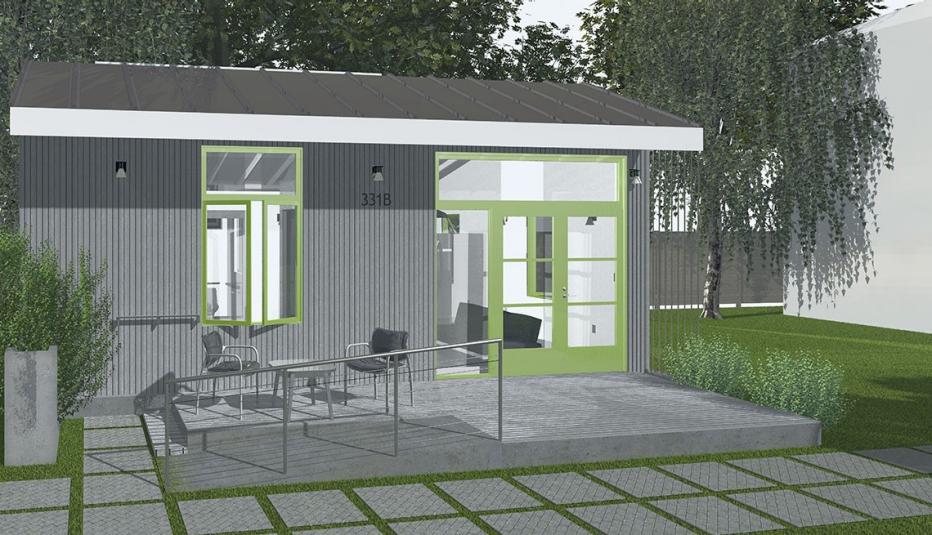AARP Hearing Center
David Morley, American Planning Association
Shannon Guzman, AARP Public Policy Institute


Accessory dwelling units (ADUs) are a valuable tool to help communities broaden housing choice in single-family neighborhoods. This report is designed as a guide that is intended to help community leaders, planners, and housing practitioners and advocates take concrete steps to overcome specific barriers to expanding the local supply and legal occupancy of ADUs.
While the guide allows readers with limited experience with ADUs to progress through a sequence of potential ADU reforms, readers should feel free to skip around, based on their level of experience and the specific needs in their community.
This publication is one product of an ongoing collaboration between AARP and the American Planning Association (APA). AARP works on multiple fronts to help communities become more livable, including encouraging programs and policies that expand housing options and increase housing affordability to help people remain in their homes as they age. AARP’s efforts on ADU policy support these goals. APA is focused on promoting effective planning that creates communities of opportunity for all. Housing and zoning reform is a critical area of concern. APA believes that reforming codes and empowering planning are essential elements of addressing the nation’s housing challenges and meeting today’s social, economic, and equity challenges.
The Guide
This guide is divided into five chapters. The introductory chapter profiles AARP and APA’s collaborative efforts to promote ADU reforms, provides basic background on ADUs, and introduces four categories of barriers to increasing the construction and occupancy of ADUs across the United States. Each of the four categories is discussed in its own chapter, which includes potential solutions to addressing the barriers, an index of external resources, and examples from communities across the country that experienced – and overcame – barriers to ADU development, as follows:
1) Overcoming Political Barriers
In most states, local officials have wide discretion to implement regulatory and assistance programs that affect the construction and occupancy of ADUs. Consequently, local political will is typically a precondition for any ADU reform. This chapter reviews three distinct challenges that can undermine political will: lack of understanding, lack of inclusivity, and local intransigence.
2) Overcoming Regulatory Barriers
Most states, cities, towns, and counties have the authority to adopt local zoning regulations that determine whether an individual or family can build or occupy a specific type of ADU in a specific location. This chapter reviews three distinct challenges that represent common regulatory barriers for ADUs: few or no permissible locations, an overreliance on discretionary approvals, and overly restrictive zoning standards.
3) Overcoming Procedural Barriers
Most states grant cities, towns, and counties the authority to design their own land-use or building permit processes for ADUs. While some communities have created special processes for ADUs—including for legalizing existing unpermitted units—many others rely on universal zoning compliance or building permit processes.
Individual homeowners typically initiate and often manage the construction process for ADUs. For many potential ADU owners, the prospect of navigating unfamiliar permitting processes can be intimidating. Complex or time-consuming procedural requirements can discourage some applicants from adding an ADU to their property and motivate others to add units without securing the proper permits. This chapter reviews three distinct challenges that represent common procedural barriers for ADUs: inexperienced applicants, uncertain processes, and illegal units.
4) Overcoming Financial Barriers
ADUs are small and typically cheaper than single family homes. However, they can cost more to develop on a per-square-foot basis. To add an ADU to their property, homeowners must have access to enough cash to self-finance or have enough equity in their home and income to secure financing from a bank or credit union.
Currently, many commercial lenders provide first-mortgage refinancing or second-mortgage options that owners with high incomes and at least twenty percent equity in their homes can use to finance ADU development. Beyond this, many banks and credit unions offer renovation loans that high-income owners with high credit scores can use to finance ADU projects. However, in most communities, low- and moderate-income homeowners have few, if any, ADU financing options beyond personal or family loans or credit card debt. This chapter reviews three distinct budget categories representing common financial barriers for ADUs: planning and design costs, construction costs, and development fees and charges.
Other Resources in the Guide
Each discussion of potential solutions to a specific challenge includes a grouping of resources for further information. A References section at the end includes works cited in framing discussions throughout the guide. Finally, the guide includes a Glossary to clarify the intended meaning of a small number of specialized terms.
Conclusion
Local communities have many opportunities to pursue reforms that can expand ADU construction and occupancy, but reforms are often iterative, and no community is likely to tackle every barrier listed here in a single effort. The recent surge in ADU construction and occupancy in states and communities that have embraced regulatory reforms shows that even simple changes, such as defining ADUs as a distinct permissible use in the zoning code, can have a profound effect on ADU opportunities.
Suggested Citation:
Guzman, Shannon, and David Morley. Expanding ADU Development and Occupancy: Solutions for Removing Local Barriers to ADU Construction. Washington, DC: AARP Public Policy Institute, May 26, 2023. https://doi.org/10.26419/ppi.00172.001
ADU Communications Materials
Free communications resources featuring key facts and helpful tips to support ADU development and help communities include ADUs in their mix of housing options. Download the printable brochure, postcard, and infographic.






























































